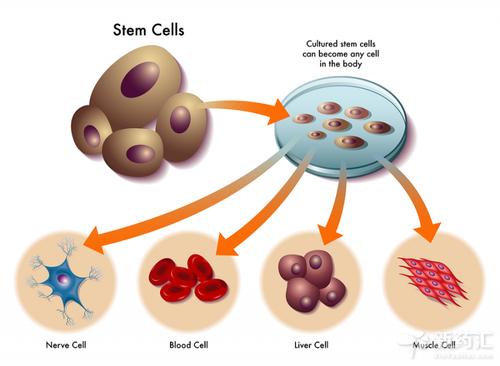Can stem cell therapy treat male dysfunction?
- Normal Liver Cells Found to Promote Cancer Metastasis to the Liver
- Nearly 80% Complete Remission: Breakthrough in ADC Anti-Tumor Treatment
- Vaccination Against Common Diseases May Prevent Dementia!
- New Alzheimer’s Disease (AD) Diagnosis and Staging Criteria
- Breakthrough in Alzheimer’s Disease: New Nasal Spray Halts Cognitive Decline by Targeting Toxic Protein
- Can the Tap Water at the Paris Olympics be Drunk Directly?
Can stem cell therapy treat male dysfunction?
Can stem cell therapy treat male dysfunction?. Explore the feasibility of stem cell therapy to treat male dysfunction?
Erectile dysfunction (ED) is a common andrological disease. It refers to a condition in which men are unable to achieve a full erection or maintain an erection for a short time. It can occur at all ages. It is mainly middle-aged and elderly, and the older the age, the higher the incidence.” The incidence of sexual dysfunction is very high. For example, the incidence of premature ejaculation is 14% to 41%. The incidence of ED in Asian men is 2%~88%.
Three reasons leading to ED
From the etiological analysis, ED can be divided into organic, psychological and mixed. Organic ED can be caused by various metabolic disorders (such as diabetic hypertension, atherosclerosis, penile fibrous cavernitis, etc.) or physical shock (such as trauma, pelvic surgery, etc.). Psychological disorders (such as anxiety and depression) can inhibit erectile function through mental or drug-related pathways, leading to psychological ED.
Traditional medical effects treat the symptoms of ED but not the root cause
Although therapies such as oral phosphodiesterase inhibitors, intracavemosal injections (ICD) vasoactive drugs, and low-intensity shock waves have emerged in the past two decades. The therapeutic effect is limited to relieving symptoms, often temporary. Improvement rather than permanent cure or radical pathological improvement. The breakthroughs in the treatment of severe ED are even more limited. Among them, diabetic ED and post-traumatic ED (including iatrogenic) are more serious and do not respond well to traditional medications. Look for and develop new therapies. So as to extend the improvement time. Improve the efficacy. It is the focus of research in this field.
Stem cell therapy
Stem cells have the ability to differentiate to produce mature tissue cells, and also play a paracrine role. They seem to play a key role in the healing process of damaged or defective tissues through the chemotaxis, anti-inflammatory, regenerative, and angiogenic properties of stem cells. And anti-apoptosis. The research mainly uses embryonic stem cells (ESCs), a large number of basic research applications of embryonic stem cell (ESCs) treatment and clinical application (ASCs) of adult stem cells have shown satisfactory improvement in the treatment of erectile dysfunction.

Preclinical experiment
Bochinski conducted related research and divided 26 male SD rats into 4 groups: 5 underwent sham operation; 8 (control group) underwent bilateral CN clamp, and injected stem cell culture medium into the corpus cavernosum; 4 After clamping, (NES) neural embryonic stem cells were injected (MPG) into the main pelvic ganglion; after the last 9 clamps, NES cells were used for intracavernosal injection (ICI). Three months later, the erectile response was evaluated by cavernous nerve electrical stimulation, and the intracavernous pressure of the penis was measured.
The results showed that the average peak value of ICP in the first group was 96.9 (18.0) cmH, O, which was significantly higher than that of the other groups (P<0.05); the average peak value of ICP in the second group was 30.5 (8.3) cmH, O, which was significantly lower than the third ( 55.1(19.2)] and group 4 [54.1(23.8)cmH2O] (P<0.05), there was no significant difference in the average ICP peak between group 3 and group 4. In the experimental group injected with NES cells, the staining results were also significantly better. This shows that the use of NES cells can improve the erectile function of neurogenic ED rat models.
Clinical experiments
Haahr et al. used (ASCs) adult stem cells to perform ICI on 17 ED patients with a history of (RP) prostatectomy (unrecoverable with drug therapy) to determine safety, tolerability and efficacy. The results showed that intracavernosal injection of ASCs was well tolerated. Only 5 patients had minor adverse events related to liposuction, and it was found that the remaining 12 were able to achieve erections and complete sexual intercourse without taking oral drugs. An analysis after 1 year of follow-up showed that patients who had recovered their urinary control after RP could significantly improve their sexual function through injection.
Summary
The future direction, whether it is animal experiments or clinical trials for ED, stem cell-related therapies have mostly shown significant improvement in ED symptoms. Before large-scale clinical trials, standardized inspection standards must be established to meet an international standard. It is believed that with the continuous research of ED-related mechanisms and the deepening of the understanding of stem cells and their derivatives, stem cell therapy will play a more important role in the treatment of ED.
(sourceinternet, reference only)
Disclaimer of medicaltrend.org



